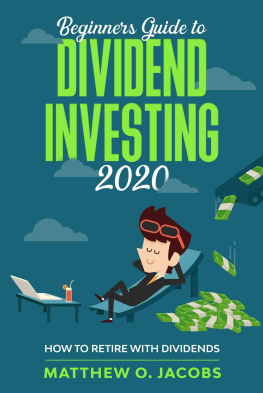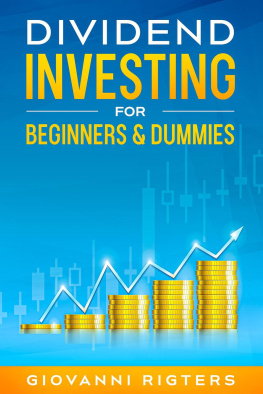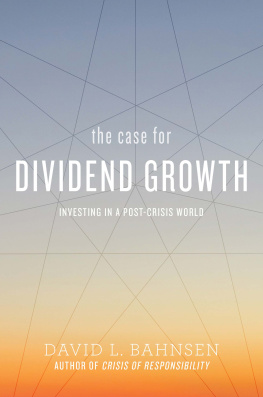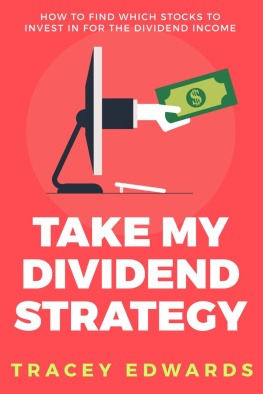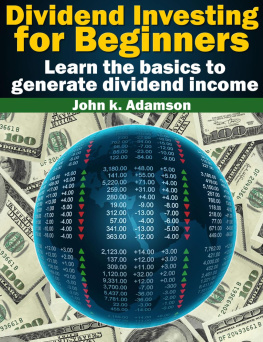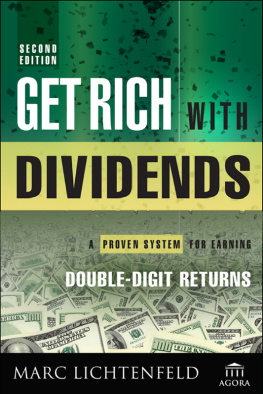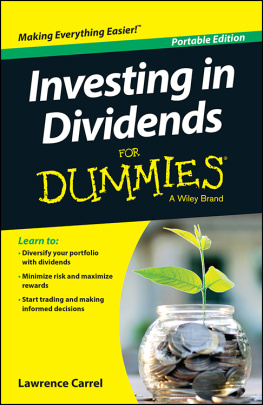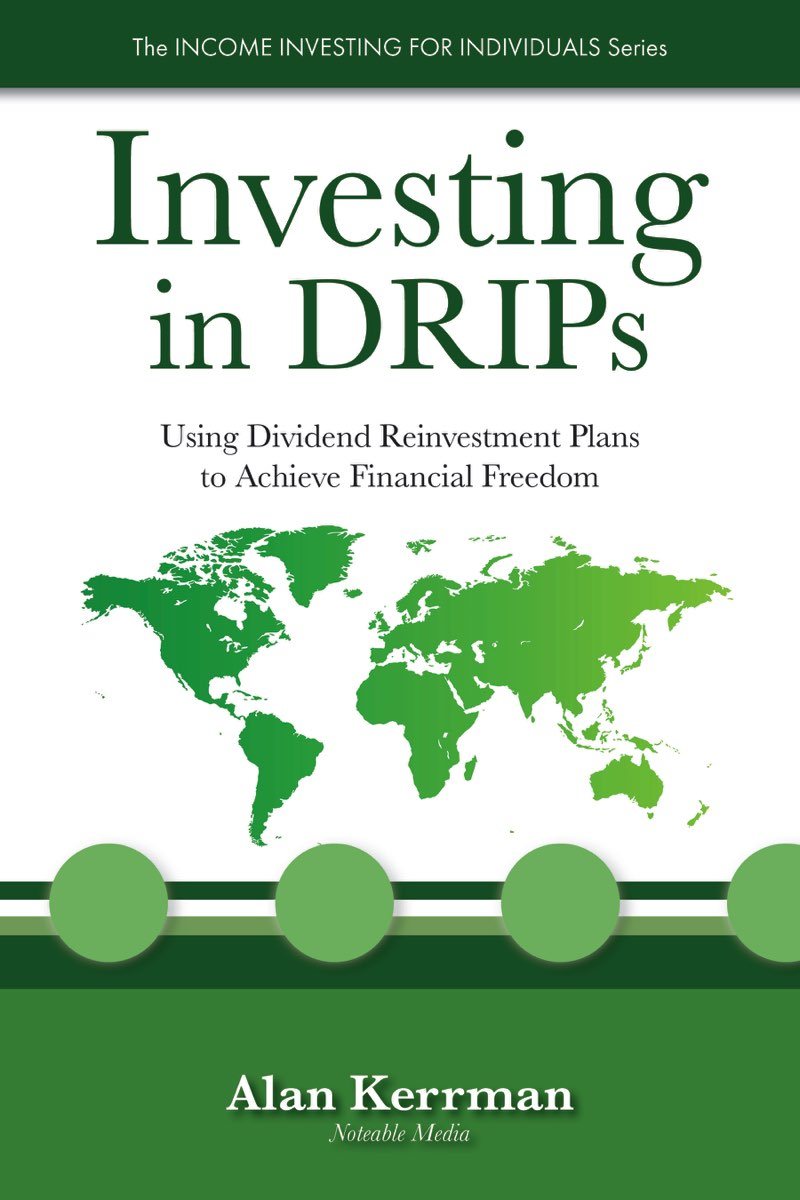Investing in DRIPs: Using Dividend Reinvestment Plans to Achieve Financial Freedom
C opyright 2015-2016 Alan Kerrman, Notable Media. All rights reserved worldwide.
Copyright, Legal Notice, and Financial Disclaimer:
This publication is protected under the US Copyright Act, and all other applicable international, federal, state, and local laws and all rights are reserved, including resale rights. Please note that much of this publication is based on personal experience and anecdotal evidence.
Although the author and publisher have made every reasonable attempt to achieve complete accuracy of the content in this guide, they assume no responsibility for errors or omissions. Also, you should use this information as you see fit, and at your own risk. Your particular situation may not be exactly suited to the examples illustrated here; in fact, it's likely that they won't be the same, and you should adjust your use of the information and recommendations accordingly. Any trademarks, service marks, product names, or named features are assumed to be the property of their respective owners and are used only for reference. There is no implied endorsement if we use one of these terms. Finally, use your judgement. Nothing in this ebook/guide is intended to replace common sense, legal, medical, financial, investment, or any other professional advice, and is meant only to inform and entertain the reader.
First Edition, v. 1.4
Published by Notable Media
dripinvestingplans.com
Also available in paperback: ISBN 978-1-51707-926-0
Also available in audiobook format.
Preface
The Power of DRIPs: The Compounding Power of Smart Dividend Investing
H ere's a book for individual investors, by an individual investor. I've made every mistake there is when it comes to money and investing, but I didn't give up. Along the way, I kept hearing about DRIPs (and DSPPs), and I thought that they were some outmoded investment models that went away after the discount brokers gave all of us retail investors a lot more trading choices and features.
NOPE. What I found instead was that DRIPs -- or dividend reinvestment plans -- solved three very serious problems for me! One is that my investing became completely automated. My regular checking account ACH withdrawals meant we'd always make regular monthly investments, and at prices that would dollar-cost-average over the course of the year. Along with the lower fees across the board, this type of income investment also helped me keep from overtrading, saving me all sorts of extra transaction fees. Plus the power of reinvested dividends means compounded growth that we can use for income later when we need it.
Join me as we explore how individual investors in 2015-16 can still take advantage of the power of investing in DRIPs to access the best blue chip companies -- here and around the world -- and get regular dividend payments from a personal portfolio of growth and income stocks. And the best part is that for me, it's part of an overall investment diversification plan that still includes my 401k, my Roth IRA, and a trading account for my stocks, options, and occasional commodity futures. DRIPs now equal compounded dividend income later!

D ividend Reinvestment Plans (DRIPs) are a system for individual investors to bypass a broker and buy stock directly from a public company in the market. These types of plans are perfect for long-term investors who want to accumulate holdings by making monthly or quarterly purchases of stock. However, with the advent of the discount brokerage account -- many with free dividend reinvestment services -- many investors consider DRIP plans a thing of the past.
In 2015-16, DRIP Plans Still Make Sense
Long-term investing in dividend-paying stocks is still considered a smart strategy for individual investors. But retail investors who purchase dividend stocks through their discount brokerage accounts incur transaction fees of an average of $7.99 to $12.99 per purchase. If you buy a dividend-paying stock, this transaction fee essentially wipes out the first few -- or several -- dividend payments. The other drawback of most brokerage accounts is that you must always make full share stock purchases (1-100+), rather than partial or fractional shares. Outside of a dividend reinvestment plan, you are not allowed to buy half a share of IBM, for example, recently trading at $146.
On the other hand DRIP accounts -- after a modest initial set-up fee - often charge as little as $1 or $2 per stock purchase. Some DRIP plans are entirely free, where the underlying company pays all of the necessary fees. In addition to lower transaction costs, DRIP plans, and the related Direct Stock Purchase Plans (DSPPs), allow users to buy fractional shares with each transaction. For example, a monthly purchase of $50 in stock with a debit fee of one dollar would accumulate $49 of the underlying security. A DRIP purchase of stock with a $20 share price would give the investor 2.4500 shares. With regular investing the fractional shares become whole shares, and the desired stock accumulates faster.
The real power of fractional shares happens at the quarterly dividend payout. Dividends are essentially profits being shared by the company with all of its owners, and since you hold shares of the company, you will receive a portion of the profits based on how many shares you hold. The power of DRIP plans is that even the fractional shares earn partial dividends, meaning larger payouts, and at a faster overall rate.
DRIP plans make sense for retail investors for many reasons. It is possible to earn significant dividend income in retirement, but only if you hold a large number of shares. If each share purchase costs about $10 to make, even an occasional $100 investment is weighed down by a ten percent transaction fee. Since the DRIP plans are cheaper all around, it makes sense to make regular monthly purchases and not wait to accumulate a lump sum. Why? When individual investors wait to invest, often the money gets diverted and never ends up in the market.
DRIPs make financial sense. The monthly, quarterly, or annual paperwork requires investors to keep good records but plan on simply buying and reinvesting for a long time. These are not trading accounts. The transfer agents try to dissuade trading of any kind with higher selling fees.
What's the benefit here? These accounts make retail investors plan long-term, and stop trading in and out of their holdings based on news headlines. With steady stock purchases in a DRIP plan over a long period, investors will enjoy the benefit of dollar-cost-averaging: buying less stock when prices are high, and accumulating more when the markets pull back. With the right underlying stocks, DRIP plans are a great long-term wealth plan, even in the volatility of our recent markets.


